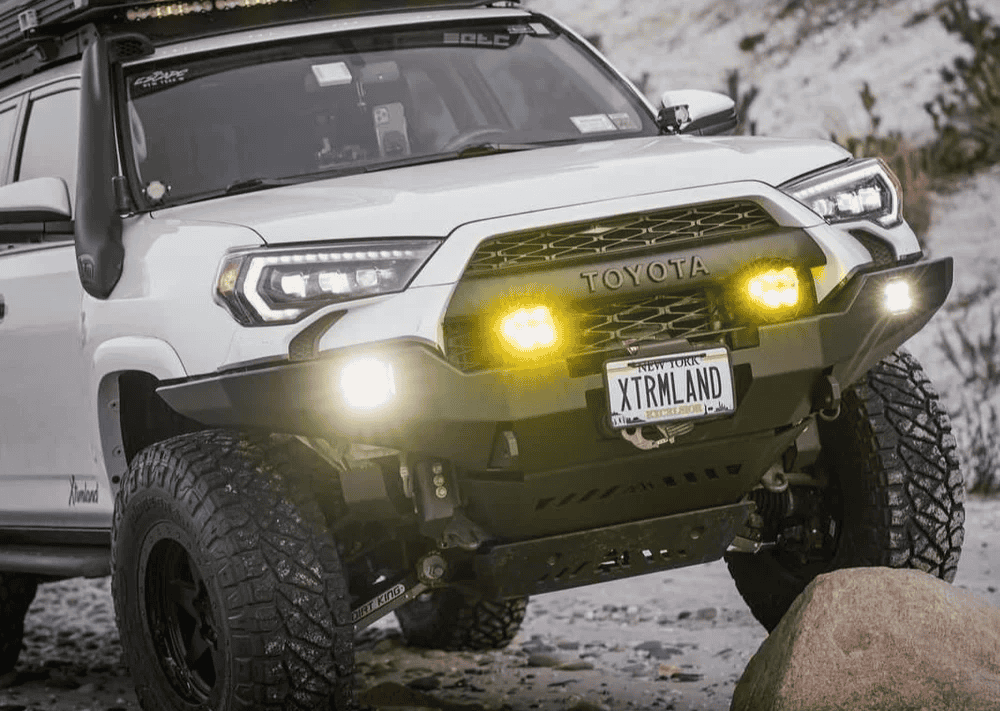Overland Vehicles

An extreme terrain expedition rig is equal parts traction, geometry, and endurance. Start with a stout chassis and a driveline that includes a true low range transfer case and selectable locking differentials. Clearance is not a number, it is a system: approach, breakover, and departure angles work with ground clearance, tire diameter, and wheel placement to keep the body off rock. Skid plates, rock sliders, and a stout front bumper protect vital components so you can focus on line choice rather than worrying about the oil pan. Long travel suspension that balances articulation with control keeps tires planted while managing payload through corrugations and sharp ledges.
Tire selection does the heavy lifting. A quality all terrain or mud terrain with a strong carcass, appropriate load rating, and the right diameter for your gearing will do more for real world grip than an exotic part bolted elsewhere. Bead retention matters when pressure drops for traction, and beadlock wheels add insurance when terrain turns nasty. Winches, soft shackles, recovery boards, and a reliable jack should be mounted where they can be used quickly, with proper anchor points front and rear. Keep recovery lines, gloves, and dampers organized so the kit stays ready under stress.
The best traction aid is predictable torque at idle. A crawl friendly first gear ratio, a low range near three to one or deeper, and lockers that engage without drama make technical sections safer. Axle strength should match tire size and gross weight, with upgraded shafts or hubs where factory parts are marginal.
Aim for controlled travel, not just height. Damping that resists fade on washboards and stabilizes weight over whoops preserves both the driver and the chassis. Pair spring rates to the final build weight rather than an empty shell, then tune damping to manage that mass.
Flat skid plates that do not trap mud, sliders tied into the frame, and a bumper with recovery points and a fairlead save trips. Protect steering, transmission, fuel tank, and transfer case. A high mount intake and sealed electrics raise water fording margins.
Range is more than fuel. Dual battery systems with smart isolators and high output alternators keep fridges cold and radios transmitting. Solar helps at camp, but the alternator is the workhorse during travel. Use DC to DC charging to protect modern electronics and feed lithium storage safely. Inverters should be sized to actual loads, with shore power charging for pre trip staging.
Water storage needs to be secured low and central, with filtration that matches your region’s sources. A compact diesel or gas heater extends the season, while ventilation prevents condensation. Interior layouts should allow sleep without unpacking gear. Lighting that preserves night vision around camp and floods the trail when needed reduces fatigue.
Communications and navigation are part of safety. A solid state GPS with offline maps and a reliable satellite communicator or ham radio closes the gap where cell service fails. Mount antennas away from roof racks to reduce shadowing. Keep a paper map and a compass as the last layer. A comprehensive first aid kit, fire extinguisher placement, and a torque wrench for wheel service round out the essentials.
Use proper cable gauge, sealed connectors, and fusing at the source for every circuit. Loom routing, strain relief, and service loops make field repairs realistic when conditions are rough.
Weight is the quiet adversary. Every accessory has a mass cost and a maintenance cost. Know your gross vehicle weight rating and axle limits, then weigh the finished rig with full fluids and travel gear. Balance fore and aft so braking, handling, and traction stay predictable. Choose materials and fixtures that tolerate dust, vibration, and cold starts. Simple wins when you are days from a parts counter.
Serviceability should guide layout. Filters, belts, fuses, and recovery gear must be reachable without unpacking. Fasteners should be standard across the build when possible. Test locally before you go remote. Shake down trips reveal heat soak, drawer rattles, and wire chafe points that are invisible on paper. Training matters as much as hardware. Practice winch use, wheel placement, tire repair, and spotter communication until they are second nature.
Legal considerations vary by region. Keep lighting, tires, and protrusions within code. Noise, trail etiquette, and tread principles protect the places we love. Finally, remember that an extreme terrain expedition rig is a travel tool. It should carry you reliably to the trailhead, across mountain passes, and back home without drama.
If you want a purpose built extreme terrain expedition rig, align the platform with your route, payload, and timeline. OZK Customs builds start with your use case, then translate it into chassis choice, suspension tuning, armor, interior, and power systems that can be serviced on the road. Explore our approach to capable platforms on Overland rigs, see how we tailor components in Custom overland upfit, and learn what sets our process apart at Why choose OZK. When you are ready, we will spec a build that trades gimmicks for real world performance and comfort.
Ready to translate this plan into a proven build? Tell us where you travel, how you camp, and what you carry. OZK Customs will spec the chassis, suspension, power, and interior around your route and payload. Request your consult and we will map a reliable path from concept to delivery.
ADDRESS:
6159 E Huntsville Rd, Fayetteville, AR 72701
PHONE:
(479) 326-9200
EMAIL:
info@ozkvans.com